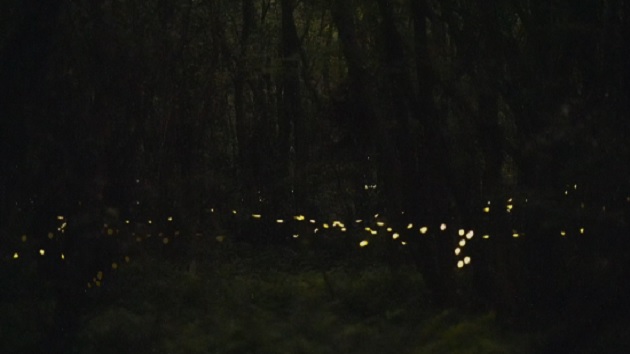
This week on Jeju: A to Z, Todd Thacker takes a brief look at this year's Cheongsu-ri Gotjawal Firefly Festival, which is held through July 14th.
In the last few years, scientists have made a number of remarkable discoveries of large firefly populations on Jeju Island.
At night, these tiny bioluminescent creatures move through the inky darkness of the island's forests and farmland like sparks from a campfire.
[Slug CG] Cheongsu-ri, Hangyeong-myeon, Jeju City
By far the largest firefly habitat is in the Gotjawal forest at Cheongsu-ri Village in Hangyeong-myeon. In the Jeju language, Gotjawal is a compound word meaning “forest” and “intertwining of rocks, trees, and bushes.”
[Slug CG] Gotjawal forest home to snails that fireflies eat
Experts say this unique Jeju forest is attractive to fireflies because it is very humid and home to various types of snails, a plentiful food source.
[Slug CG] Pollution has reduced firefly populations in recent years
Catching sight of even one firefly in its natural habitat is magical, but sadly this is becoming more rare as pollution spreads.
Fortunately, experts say that the unusually large firefly population at Cheongsu-ri Village indicates that the environment there is in good health.
[Slug CG] Cheongsu-ri Gotjawal Firefly Festival ends July 14
www.cheongsuri.kr
If you would like to see Jeju’s fireflies for yourself, the Cheongsu-ri Gotjawal Firefly Festival is on through the middle of July.
[Slug CG] Todd Thacker
Given the delicate nature of these unique insects and their forest habitat, only a limited number of people can visit the Gotjawal walking courses. Entry is on a first-come, first-served basis, and reservations are required.
[Slug CG] Jeju Tourist Information Center 064-740-6000
For details in English on how to participate in this year's event, you can consult the Jeju Tourist Information Center by calling 064-740-6000 during business hours.
Todd Thacker KCTV





